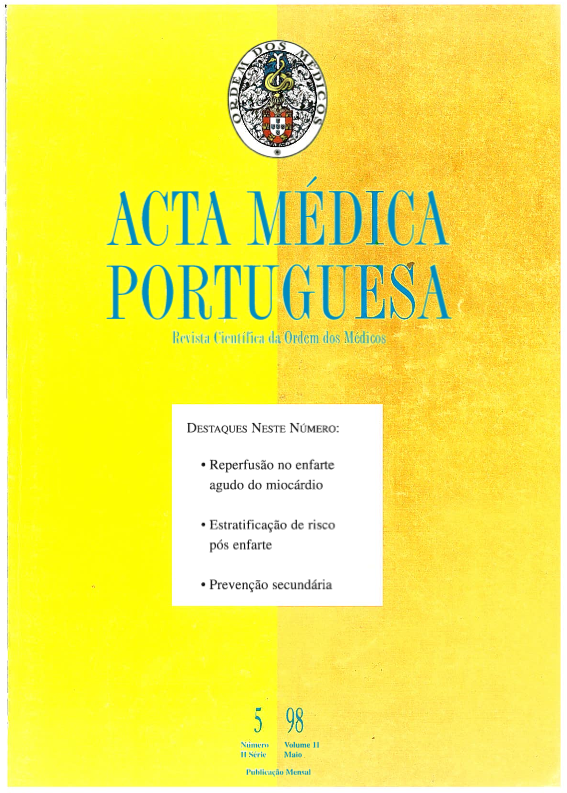Prevenção secundária do enfarte do miocárdio.
DOI:
https://doi.org/10.20344/amp.2251Resumo
Preventive measures are the most powerful measures to treat manifestations of ischemic cardiopathy. Secondary prevention of myocardial infarction involves the following intervention areas: a) Limitation of adverse physiological and emotional consequences of the acute illness; b) Identification of the patients particularly exposed to the risk of new episodes of ischemic cardiopathy or to their consequences, namely reinfarction and sudden death; c) Institution of therapeutic attitudes, surgical or medical, that can prolong life and can oppose functional deterioration and prevent symptoms; d) Institution of measures that can oppose the progression of the initial disease that is, in almost all cases, atherosclerosis. Measures that can oppose the progression of cardiac disease and its consequences after an episode of myocardial infarction, and measures that can oppose the evolution of atherosclerosis are described in this article. The measures that can influence the risk factors after an episode of myocardial infarction are briefly commented: characteristics related to life style and physical exercise; smoking habits; plasmatic lipid levels; high blood pressure; and therapeutic substitution with estrogens after menopause. Pharmacological interventions in secondary prevention of myocardial infarction are described, namely with the following groups of substances: beta-adrenergic blocking agents; platelet active agents; anticoagulants; and angiotensin-converting enzyme inhibitors.Downloads
Downloads
Como Citar
Edição
Secção
Licença
Todos os artigos publicados na AMP são de acesso aberto e cumprem os requisitos das agências de financiamento ou instituições académicas. Relativamente à utilização por terceiros a AMP rege-se pelos termos da licença Creative Commons ‘Atribuição – Uso Não-Comercial – (CC-BY-NC)’.
É da responsabilidade do autor obter permissão para reproduzir figuras, tabelas, etc., de outras publicações. Após a aceitação de um artigo, os autores serão convidados a preencher uma “Declaração de Responsabilidade Autoral e Partilha de Direitos de Autor “(http://www.actamedicaportuguesa.com/info/AMP-NormasPublicacao.pdf) e a “Declaração de Potenciais Conflitos de Interesse” (http://www.icmje.org/conflicts-of-interest) do ICMJE. Será enviado um e-mail ao autor correspondente, confirmando a receção do manuscrito.
Após a publicação, os autores ficam autorizados a disponibilizar os seus artigos em repositórios das suas instituições de origem, desde que mencionem sempre onde foram publicados e de acordo com a licença Creative Commons









